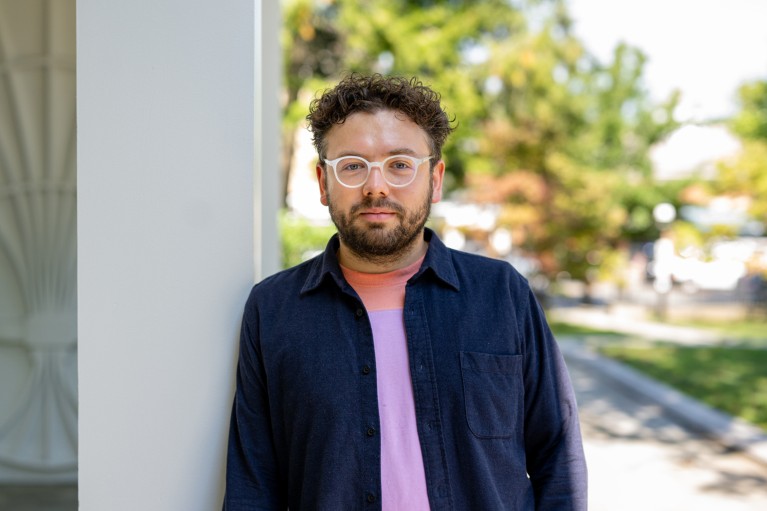
Looking at a document’s history shows how the writer’s thought process evolved — and spotlights AI shortcuts, says Nikita Bezrukov.
I was grading papers for my writing‑heavy seminar on fairness in machine learning, when the references started to get weird. The first DOI I checked returned a 404 error; the second opened a blank page; and a journal article with a plausible title didn’t appear in any database I searched. The same glitches cropped up across several submissions, making it clear that generative artificial intelligence (AI), not the students, was the first author.
The pattern was easy to spot. The prose was immaculate, yet somehow stilted — the paragraph structure was too precise. The pieces lacked a sense of struggle that signals genuine thought. Each time I opened a file, I asked the same questions: is this data set real? Does this specialist exist? Did the student write any of this? After spending weeks verifying quotations, sources and even author identities, I felt less like a teacher and more like a forensic investigator.
Then a typo jumped off the page of one essay. That paper referred to a “monolinguistic speaker” (as opposed to the standard term, ‘monolingual speaker’). The mistake was small, but it indicated that a person, not a chatbot, had drafted the text. I breathed a sigh of relief. I realized I wanted to see more imperfection.
Tracking changes
The next morning, I announced a new rule to my students, in an attempt to bake that moment into my teaching: assignments could not be submitted as single PDFs showing only the final version. Every document had to have a version history, so that I could see the writing process, not just the final product. I called the resulting score the trajectory grade: 60% of the mark would reflect how ideas developed across drafts, and 40% would cover the quality of the completed version. It was my last semester teaching first-year writing-in-the-disciplines seminars at the University of Pennsylvania in Philadelphia, so I was open to experimentation. And the class was small — only 12 students, so it was easy to change course if anything went wrong.
At first, my students were sceptical, assuming this was a tactic to police their work. A colleague suggested that I use a blockchain analogy to explain my reasoning. That framing changed the mood. Most students already knew that blockchain keeps a transparent, tamper‑resistant ledger of changes: each block stores data, such as transactions, and is cryptographically linked to the previous block, forming a continuous, verifiable chain. Any attempt to alter a block stands out immediately, so the record is trustworthy. Seeing version‑tracking tools as a classroom‑scale blockchain made sense to the students — and the requirement suddenly felt intuitive, rather than punitive.
By the end of the semester, I had learnt more from the version histories than I could have from any static paper. In my seminar, first‑year engineering and computer‑science majors choose a topic in emerging technology — for instance, fairness in drone warfare or AI‑driven admissions. Each step builds on the last: they create a literature map and develop it into a data‑rich research paper, which they refashion into public pieces, such as opinion articles and policy briefs. Because every revision was captured, my suspicions around plagiarism disappeared, and AI shortcuts stood out. I could see in detail how each chunk of text evolved over time, quantitatively by how long it took to write as well as by its length, and qualitatively by how its ideas unfolded.
My own workload improved tremendously. Grading sessions no longer felt like crime‑scene analyses, and I spent less time hunting for signs of AI assistance and more time coaching academic writing strategy. The version-control rule encouraged many students to start earlier and revise steadily, because the transparent history left no way to hide a rushed job uploaded at the deadline. It restored the habits that our writing‑in‑the‑disciplines courses are designed to teach young researchers: incremental progress and thoughtful redrafting. Their final submissions felt earned, rather than delivered by an algorithm.


